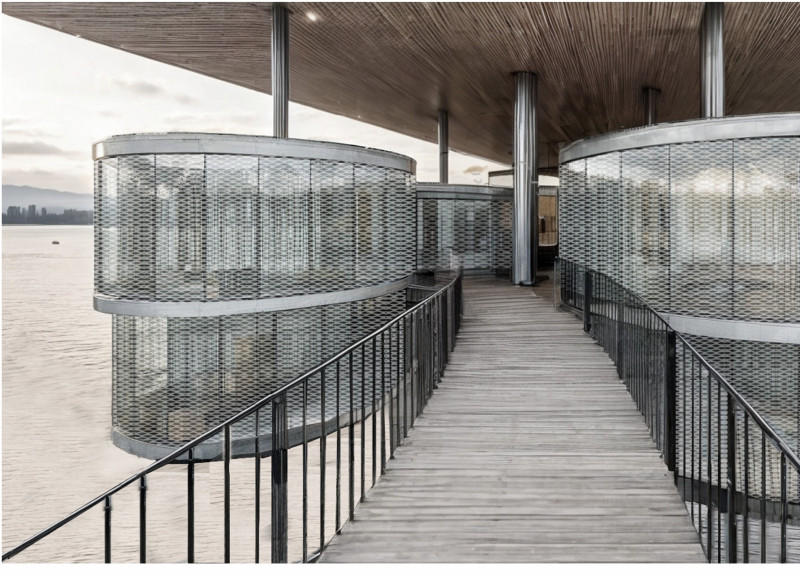5 key facts about this project
At its core, the project serves multiple functions, adapting to the needs of its users while fostering a sense of community. It accommodates both living and social spaces, encouraging occupants to engage with one another and creating opportunities for shared experiences. The layout is meticulously designed to facilitate movement and interaction, with open spaces that invite collaboration and gathering. The architectural design embraces transparency with extensive use of glass, allowing natural light to permeate the interiors while also providing visual connectivity with the outside world. This approach not only enhances the aesthetic appeal but also promotes a sense of openness and accessibility.
One of the most notable aspects of the project is its thoughtful materiality. The use of concrete offers stability and durability, while the selection of high-quality wood introduces warmth and texture, bridging the gap between the urban environment and the natural world. Steel elements provide structural support, showcasing an elegant blend of industrial and organic materials. These choices reflect a commitment to sustainability, as they are not only locally sourced but also selected for their longevity and low environmental impact. The facade treatment skillfully employs a combination of materials to create depth and character, responding dynamically to the changing light throughout the day.
Unique design approaches manifest in various architectural elements throughout the project. Curvilinear forms punctuate the otherwise rectilinear layout, softening the overall silhouette and creating a sense of movement. This deliberate choice challenges conventional design paradigms, inviting occupants and visitors alike to experience the space differently. The integration of green roofs and living walls not only enhances the aesthetic profile but also contributes to the ecological footprint of the building. These features promote urban biodiversity while providing insulation, which reduces energy consumption.
Another distinctive aspect of the project is its emphasis on public engagement. The design includes dedicated communal spaces, such as gardens and terraces, which encourage social interaction among residents and visitors. These areas are thoughtfully positioned to maximize views and accessibility, inviting the community to connect with the project and with each other. By blurring the boundaries between private and public spaces, the architecture fosters a sense of belonging and ownership among its users.
In exploring the architectural plans and sections, one can appreciate the careful consideration given to circulation and spatial hierarchy. Navigational pathways are clearly defined yet flexible, allowing for both privacy and openness depending on the users’ needs. The architectural designs demonstrate a keen awareness of human scale, ensuring that spaces feel comfortable and inviting. The interplay between interior and exterior spaces further enhances this relationship, with large terraces and balconies providing seamless connections to the outdoors.
Overall, this architecture project is a compelling representation of contemporary architectural practices that prioritize sustainability, community engagement, and innovative design. Its unique design approaches not only elevate the user experience but also contribute positively to the built environment. For those interested in a deeper dive into the architectural ideas that underpin this project, exploring the architectural plans and sections will provide further insights into the meticulous thought process and creativity that shaped its realization. Engaging with the project presentation will reveal the myriad of details that make this design a noteworthy addition to the landscape of modern architecture.























